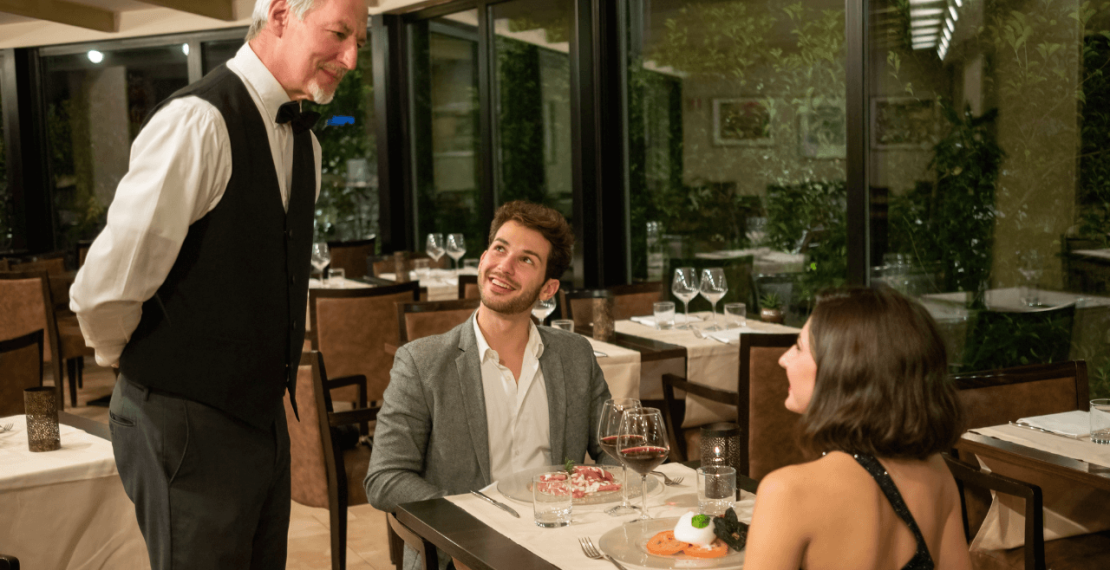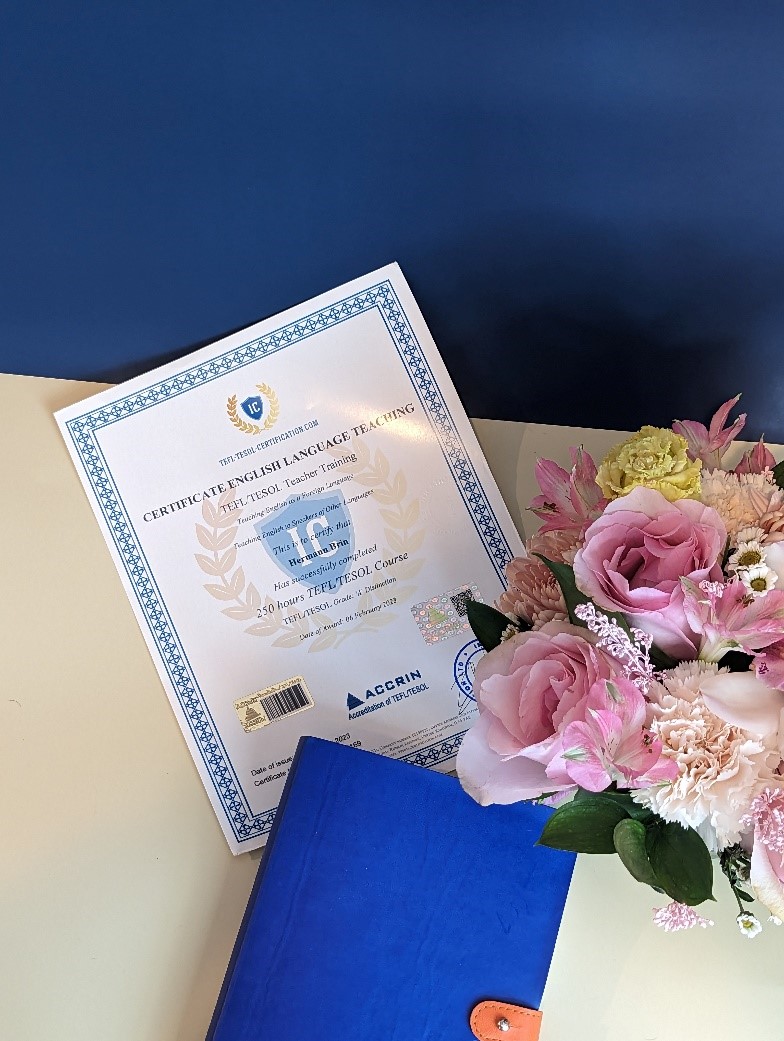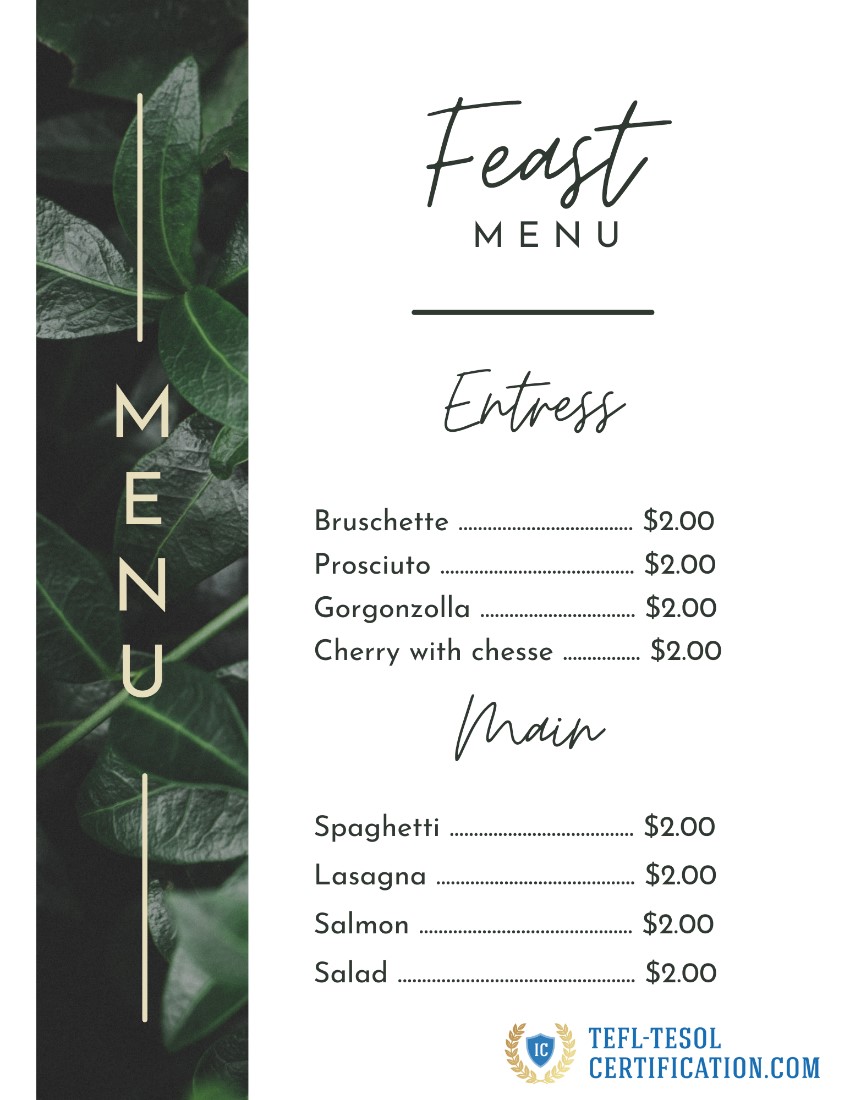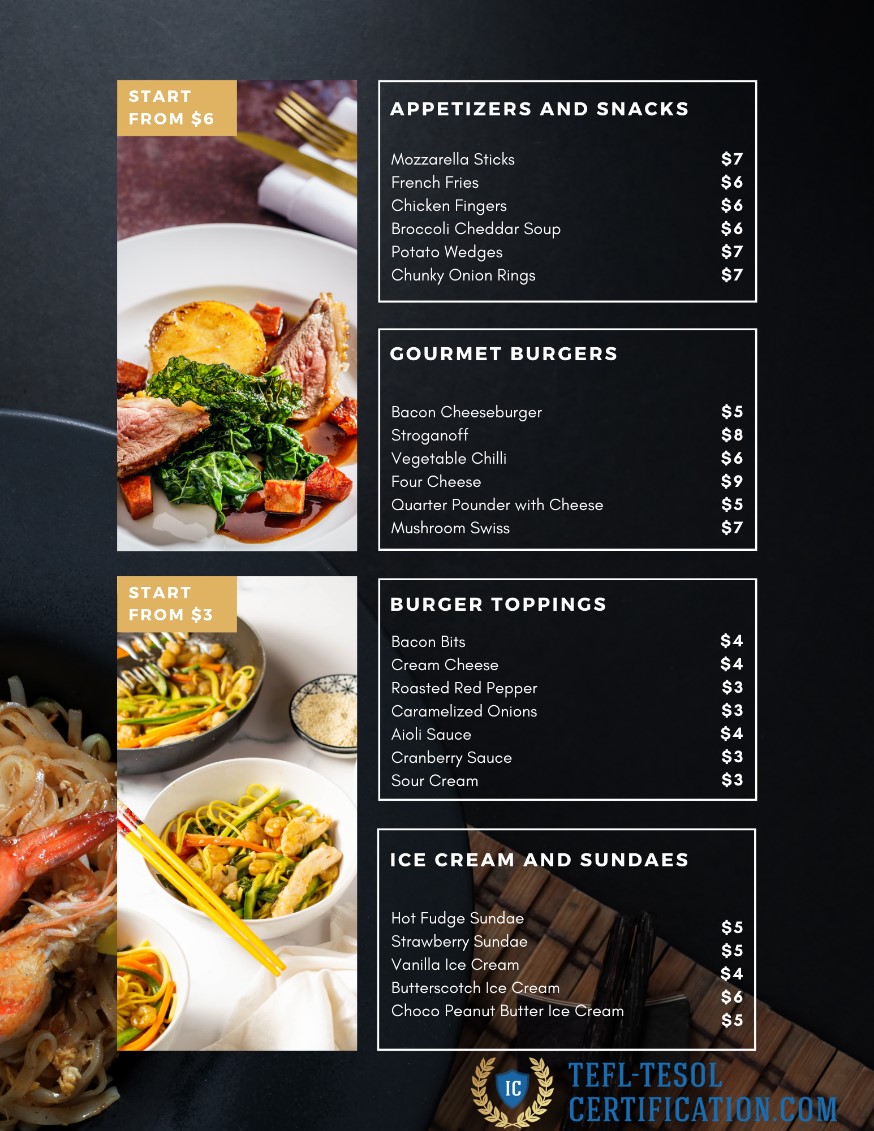Liked the article?
Share with friends!
Teaching English and role-playing the Restaurant topic

Congratulations on your decision to become an English teacher! You're on the right path and doing a great job. You have the potential to become an influencer who can change someone's life, which is a huge achievement. Perhaps you have already become that incredible person.
If you haven't obtained TEFL & TESOL certification yet, I strongly recommend going through the course to gain the basic knowledge that every English teacher should have. Additionally, having a TEFL/TESOL certificate will help you find a job more quickly and secure a better position.

This article aims to help you organize your lessons and provide you with some good ideas for class content. I will provide examples of activities that can be helpful for both offline and online classes.
Role-plays
As the preferred method of teaching English is communicative, the main goal of each lesson should be to encourage students to speak and use the language they need in their everyday lives. Memorizing Shakespeare's poems or writing essays in ancient English serves no practical purpose in communicative language teaching. Language should be seen as a tool rather than an art form.
Get your TEFL TESOL certification
Travel, work online, get a job abroad, or be
an EFL and ESL teacher in your country.
That's why your students will be delighted to practice common life situations, such as dining in a café or restaurant. You can set up tables as in a restaurant and divide the students into groups of four, assigning the roles of waiters and waitresses to ensure that each table has its own waiter.
Before the role play, it's essential to introduce the relevant vocabulary. Discuss with the students their favorite dishes, types of restaurants, their typical orders, how often they eat out, the amount they tip, and then show them several examples of menus while discussing the dishes and beverages. Talk about dietary preferences like gluten-free, vegetarian, vegan, or peanut-free meals, and address possible allergies or food restrictions.

Introduce all the new words and phrases within the context. Here are a few examples:
- à la carte (adjective): available as an individual dish; not part of a set menu.
Do you have à la carte dishes? - appetizer (noun): a dish served before the main course.
For an appetizer. I'll have Ham and Apple Cheese Wraps, please. - bill (also known as "check") (noun): the written total amount due for a meal and drinks.
Could you bring the bill, please? - café (also referred to as "coffee shop") (noun): an informal eatery serving simple meals along with hot and cold beverages.
Let’s meet in the café at the corner. - cafeteria (also called "canteen") (noun): a place that offers affordable meals in a school or workplace, usually through self-service.
I don’t like food in the school cafeteria. - cheese platter (noun): a selection of cheeses and crackers served on a large plate.
For tonight’s party, we prepared a cheese platter and more wine. - course (noun): one portion of a meal.
French dinner usually consist of three or four courses. - cuisine (noun): the style of cooking associated with a country or region.
There's more to Ukrainian cuisine than just borsch, you know. - dessert (noun): sweet food enjoyed at the end of a meal.
Let’s share the dessert. - eat out (phrasal verb): to dine in a restaurant, especially in the evening.
We eat out two nights a week. - entrée (noun): 1. the main course of a meal 2. a course before the main course (British English).
What are you having for your entrée? - fast food (noun): quickly prepared food like hamburgers and French fries.
Please, grab some fast food on the way home. - Make a booking (also "book a table") (phrase): To contact a restaurant and reserve a table for a meal.
It's a popular restaurant, so we'd better make a booking. - Menu (noun): The list of food and drinks available in a restaurant, café, hotel, etc.
Let's check the menu. - Pasta (noun): Italian cuisine made from flour and water, such as spaghetti, ravioli, lasagne, etc.
You can order any of our pasta and get the second one for free. - Pudding (noun): A soft, sweet food consumed as a dessert.
My mother used to make the best rice pudding ever! - Restaurant (noun): A place with a kitchen and dining area where people pay for and consume meals.
There are lots of Italian restaurants around here. - Savoury (adjective): (Of food) salty or spicy rather than sweet.
I prefer savoury sauce. - Service charge (also "service") (noun): An additional amount added to a restaurant bill that is intended to be given to the staff for their service.
They've already added a 20% service charge. - Side dish (also "side order") (noun): An additional dish or serving that is ordered alongside a main dish.
I'll have the burger with a side dish of salad, please. - Sommelier (also "wine steward") (noun): A wine expert who provides guidance to guests on wine selection and pairings.
Our sommelier handles the wine orders. - Special (noun): A dish that is available occasionally but not listed on the regular menu.
Today's specials are crockpot honey garlic little smokies - Tip¹ (noun): Additional gratuity provided by a customer to a waiter or other staff members as a token of appreciation for their service.
It is mandatory to leave 15% tips in this restaurant. - Tip² (verb): To offer extra money to a waiter or other staff member in recognition of their service.
I always tip the waiters. - Vegetarian (adjective): Pertaining to dishes or diets that exclude animal products, particularly meat.
I follow a vegetarian diet. - Server (noun): An individual, whether male or female, who takes orders from customers and delivers their food.
I have never worked as a server. - Wine menu (noun): A written compilation of all the wines obtainable in a restaurant.
Would you like to see the wine menu, sir?"
Tips
- Turn on a YouTube video with an example of a possible conversation in a dining setting.
After the video, discuss with the students any unfamiliar words or phrases from the video and provide explanations for clarity. - Before the lesson, collect and make copies of menus from different cafes and restaurants for a role-playing game. Distribute them to each table and waiter, so participants can choose and order, while waiters can answer their questions.

- Encourage students to speak as much as possible, using all the new phrases. While students play their roles, monitor and take notes on areas for improvement.
- If you conduct online classes, create virtual tables and divide students into teams, pretending they are friends who met for breakfast, brunch, lunch, or dinner. If the class is not too large, teams can take turns playing their roles. For larger classes, assign each team to a breakout room and circulate between rooms to monitor the process.

- I would like to suggest to every English teacher, whose students are at level A2 or higher, to introduce a new idiom in each lesson. One good idiom to start with is "Give it a whirl," which is used when someone wants to express their intention to try something new.
To illustrate the usage of this idiom, provide your students with an example:
"I've never eaten Pekin duck before, but today I'm going to give it a whirl."
Additionally, encourage your students to incorporate the new idiom during role-playing activities.
Conclusion
Get your TEFL TESOL certification
Travel, work online, get a job abroad, or be
an EFL and ESL teacher in your country.
It is perfectly fine to spend more than one lesson on this topic so that students will feel more confident when ordering a meal. Food plays a significant role in our lives, which is why it is worth dedicating several lessons to explore different cuisines. Furthermore, the breakfast menu differs greatly from the lunch menu, so it is important to let your students practice both.
